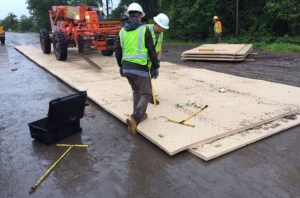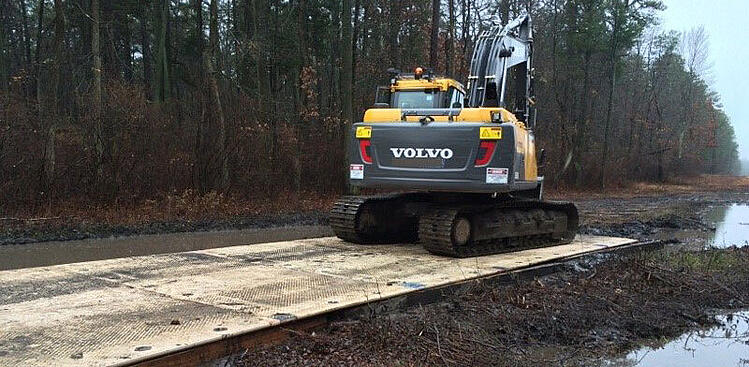It is often that utility crews have to create reliable access to remote construction sites through soggy, wet or a rough terrain, or other challenging ground conditions – that can put costly equipment and machinery at risk of getting damaged or being stuck. Composite mats are being used for many distribution and transmission projects, in order to improve the safety of crews and machinery to job sites.
Find out about some of the major benefits of using composite mats for distribution and transmission projects.
Light in weight
These are much lighter as compared to alternatives such as wooden mats. This makes them much more convenient to maneuver on job sites, as well as help reduce flight expenses.
Can be installed faster
Due to composite mats being lighter in weight, these can be installed much more quickly. These are also flexible, which makes them easy to bend to the shape of the terrain that these are used in. It can be perfect for the creation of a track on uneven ground and is much more convenient to work with, as compared to Laminated or CLT mats that are inflexible in nature.
Long lasting
As compared to wooden mats, composite mats can last for a long time. This is another of their major benefits. Unlike wooden mats, composite mats can hold up really well against inclement weather conditions. Wood mats can also be observed to rot, splinter and absorb contaminants from the land – which makes them more dangerous to deal with. However, composite mats have no such problem and can easily be cleaned up after being used. Against extreme weather conditions, this type of mat can hold up really well.
Wood is damaged by moisture. But in job sites, moisture is quite common. Wood is also more susceptible to absorbing toxic contaminants from any job site. Such problems are absent in composite mats, which makes them better for the protection of the environment.

Reusable
As these can be cleaned up easily and are long lasting in nature, the recovery percentage of composite mats is higher from a job site. These can last for a long time to come and can be used again and again.
Smooth to drive on
As compared to wood, it is smoother to drive on composite mats. These are thin in size which makes it less bumpy as well as easier for vehicles to go over them.
Looks more aesthetic
In private farms and ranches, work sites can look cleaner with the use of composite material. These have a more aesthetic appearance as compared to wood, which can look ugly soon after being put to use. Many people even like to make composite mats a permanent fixture on their lands, and use them to protect the ground against heavy tire marks from trucks and other vehicles that enter and exit regularly.
Clearly, there are many advantages, which make composite mats much better to use. These are being used for distribution and transmission projects more and more today, for these benefits.
